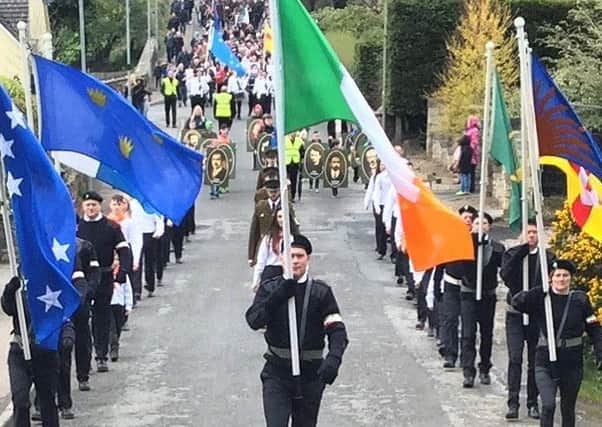Unionist traditions would be embraced in a '˜new Ireland' - Adams


Praising the people of Tyrone for “never letting us down”, he said it was “no accident” Sinn Fein’s new leader in the North - Michelle O’Neill - was from the county.
But, he also made special mention of Martin McGuinness, as, he said: “Sinn Féin and Irish republicanism is stronger today because of him.”
Advertisement
Hide AdAdvertisement
Hide AdSpeaking to the crowd gathered he charted the growth of Sinn Fein, from two Westminster seats - in Mid Ulster and West Belfast - 19 years ago to the party it is now.
“Today,” he said, “we have 23 TDs, seven Seanadóirí, four MPs, four MEPs, 27 MLAs, and 250 Councillors.
“We now receive more votes than any other party on this island.
“It is by growing this political strength that we will be able to exercise greater influence, and shape the political agenda in both states on this island,” he went on.
Advertisement
Hide AdAdvertisement
Hide AdCalling on those present to “organise and mobilise”, he said now was not the time to “sit on our hands” even though the recent assembly election brought about “seismic changes”.
But he added that if Irish unity was achieved he did not want to see an Ireland, where the south swallowed up the north, or vice versa.
Citing worries such as Brexit, inequality, women’s rights, religious rights, the right to be free from sectarianism and poverty and the rights of victims of the conflict, he said: “None of these rights threaten anyone.”
Quoting economist Michael Burke’s 2015 paper: The Economic Case for Irish Unity, he said: “Quite simply put, the whole population of Ireland would benefit economically from reunification.”
Advertisement
Hide AdAdvertisement
Hide AdAnd now the job of nationalists was to convince unionists that unification could work for all.
“We must ensure that it is more than just the two states coming together,” he added, “a new dispensation that reflects our genius and diversity, our dignity and our strengths as an island people.
“A new Ireland that embraces and reflects the traditions of our unionist neighbours.”